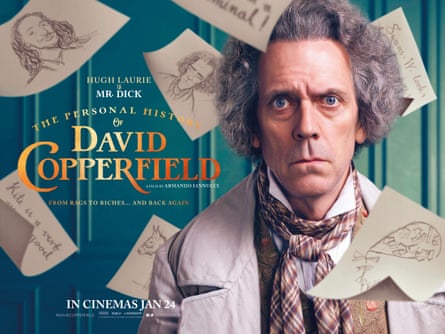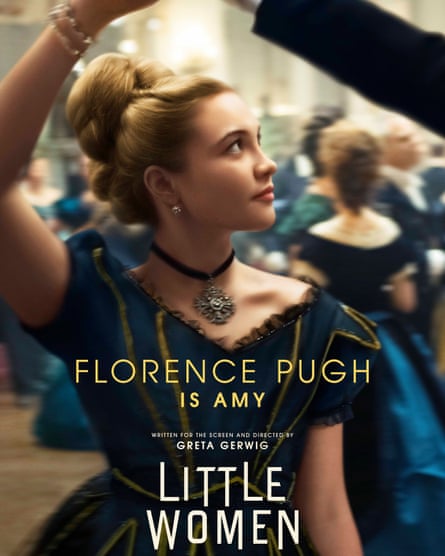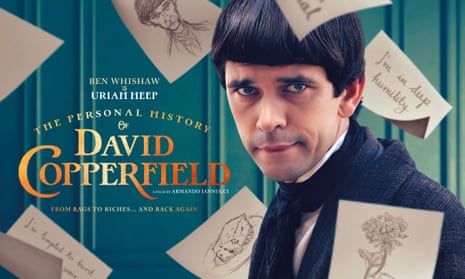You have plenty of reasons to be excited about Armando Iannucci’s The Personal History of David Copperfield. The director is a comedy giant. The cast – including Dev Patel, Tilda Swinton and Peter Capaldi – is astonishing. The early reviews are raves, the trailer is one of the year’s best, the source material is pretty solid. But what if you needed one last nudge to convince you to see it?
Well, great news. The character posters of The Personal History of David Copperfield have just been revealed. That’ll do it, surely. Because nothing is going to convince the everyman to invest in a cinema ticket like a big picture of Ben Whishaw looking vaguely consternated beneath a bad fringe, is it? Or a massive close-up picture of Peter Capaldi playing a jauntily coloured concertina, for that matter. What if I showed you a giant piece of paper announcing that Rosalind Eleazar plays Agnes in the film? You’d walk right up to the cinema and queue up until January, wouldn’t you? Of course you would. You can’t hear news like that and just do nothing.
To be clear, my issue has nothing to do with The Personal History of David Copperfield, although the only David Copperfield character poster worth anything at all is the one proclaiming “HUGH LAURIE IS MR DICK”, purely because I suspect that Laurie himself would quite like it framed on his wall.

Instead, it’s the medium that irks. I’m getting sick of character posters. Who are they for? What point do they serve? Last week we were treated to a set of Little Women character posters. Now, not much could stop me from wanting to see the film, but the sight of the cast airbrushed and glowing like they’ve just been Pompeiied by a uranium tsunami came awfully close. Truly, these are dreadful posters. Florence Pugh looks like she was dropped into a vat of Vaseline by a clumsy fool. Meryl Streep has the expression of someone exasperated by being the guinea pig for her second worst friend’s camera’s portrait mode. Laura Dern looks like how Laura Dern would look if she Pritt-Sticked an imported Laura Dern mask on top of her own face. And the same goes for Le Mans ’66. “Jon Bernthal is Lee Iacocca”. Great. Thanks for the information, Le Mans ’66.
Other types of poster I can understand. A teaser poster is usually the first piece of art that anyone will see of a film, which will obviously build anticipation. A main poster serves a number of important purposes: conveying tone, providing a visual shorthand for the film and – increasingly – serving as a calling card on streaming services. But character posters just tell us who plays what, even though the trailer and the main poster and IMDb and Wikipedia will have already comprehensively done that.
Yes, it’s a marketing technique. Yes, it might raise awareness of the film by a fraction of a degree. But I’d argue that character posters can actually dilute the effectiveness of a movie campaign. The punch is lessened. The impact is diffused. There’s no single image for everyone to look at, no one focal point for everyone to gather around.

The root of the character poster seems to come from something called a personality poster, utilised by the studios a century ago. These didn’t exist to promote a specific film necessarily, but to remind audiences of the big stars of the day, reused whenever they made a new movie. The Bags Unlimited blog uses Mary Pickford as an example. There is just a photo of Mary Pickford, to be passed around to spread the message that Mary Pickford exists. It worked wonders in 1919, but much less so now that the internet exists.
The only successful character poster trailer campaign I can think of is the one for Avengers: Endgame this year, and that’s because the MCU is a continuous soap opera rather than a series of standalone films. In theory it made no sense whatsoever – we knew who played who because we’d spent a decade watching them – but by showing us every single character and reminding us which of them had died in Infinity War, the posters took on the equivalent of a “Previously on…” recap at the start of a television programme. In that context, it was allowable.
But every single film doesn’t need to mimic it. The Lion King didn’t need to make a huge poster of a hornbill to remind us “JOHN OLIVER is ZAZU”. The Expendables 2 didn’t need to hype itself up with a portrait of Scott Adkins captioned solely by the word “ADKINS”. Nobody on Earth, I guarantee, was moved to watch Nymphomaniac because they saw a harrowing close-up of Nicolas Bro’s face at the point of ejaculation. The Personal History of David Copperfield will do well enough as it is. Let’s leave this silly character poster fad behind us.

Comments (…)
Sign in or create your Guardian account to join the discussion